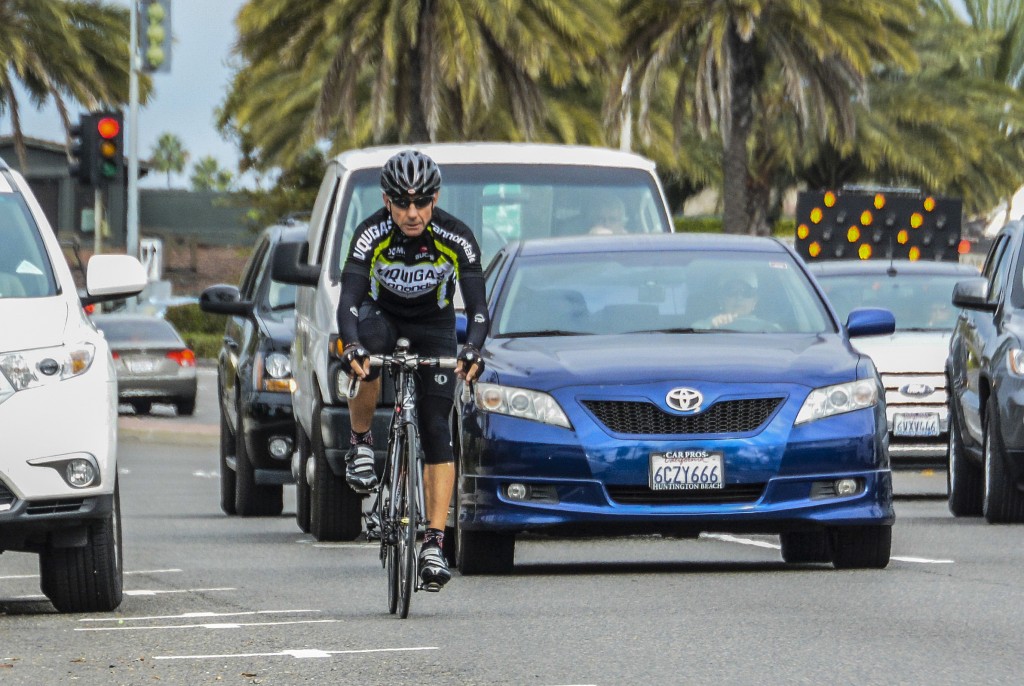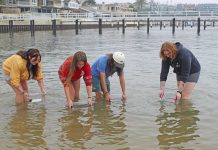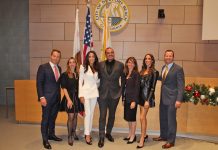
— Photo by Lawrence Sherwin
This is the third installment of a three-part series by NB Indy writer Richard Simon – a veteran cyclist – explores the challenges of staying alive while bicycling the streets of Newport Beach. Read parts one and two on the Indy website at NewportBeachIndy.com.
Motorists may curse the intrusion of a competitive flock of bicyclists that seemingly want to appropriate an entire lane for its own entertainment, but bikes and motorists need to share the road.
In Corona del Mar, the city has stenciled “Sharrows” (shared lane markings) on East Coast Highway, from MacArthur Blvd. to Poppy Ave. It’s a visual cue consisting of a two-bar chevron above a bike silhouette indicating that both car and bike can share the same lane.
“We have no real answer for driver agitation. It is an issue with no apparent resolution,” said Mike Lee, former president and current spokesman for the Orange County Wheelmen, the county’s largest bike club with more than 500 active members.
He explained that most large pelotons (groups of bicyclists) ride early when there is little traffic, so one has to ask, “What’s the issue, cars will go around you?” He took no position on either right or wrong, just what exists.
Bicycle Master Plan
Newport is very active in the cycling community, and is fully aware of the importance of bicycles in the city. To that end, a committee headed by Councilman Tony Petros – himself a very serious cyclist — is preparing a Bicycle Master Plan.
The city’s Senior Civil Engineer, Brad Sommers, PE, also a dedicated cyclist, takes care of the day-to-day aspects of the Master Plan, which he projects will be “ready for adoption by the City Council next fall.”
This will include bikeway location and design, bike parking and other support facilities, “way-finding” signs, educational-and-encouragement programs, traffic enforcement, and evaluation of progress.
Another intense cyclist since her college days at the University of Denver is nine-year City Councilwoman Leslie Daigle, who understands bike accidents as painfully as anyone. She currently sports a neck brace, having fractured a couple of vertebrae in a recent bike accident with a “hit and run” bicyclist (whom Irvine detectives tracked and interviewed a short time later).
Daigle believes what is necessary is more education for both cyclists and motorists.
“I’d like to get the public sector helping in the educational process,” Daigle said. “Insurance companies, automobile dealers, bike shops, and AAA all should participate” in spreading the word about bike safety, she said.
As far as safety on the road, “We need a change in culture,” she said.
“There are places that are more challenging than other areas in our city, so we’re planning improvements to the existing structure; however, we’re still in the R&D stages,” Sommers said.
All seven of the committee members are cyclists, whose interests run from the purely recreational beach cruiser to the nose-to-the-handlebar club rider.
City Manager Dave Kiff is also a serious two-wheel enthusiast, often spinning to City Hall from his home in Laguna as part of his conditioning for the triathlons in which he competes.
The Master Plan Committee has put out the suggestion welcome mat, and invites all citizens to make specific comments either at meetings or via an on-line survey at surveymonkey.com/s/NBbikeplan.
Although not technically a member of the Master Plan Committee, Police Lt. Jeff Lu, traffic division commander, attends committee confabs to provide “whatever input we can provide” from a law enforcement perspective.
“We want to work with the community to assure that bikes, motor vehicles and pedestrians are safe and able to travel our roads with awareness and respect to one another.”
Lu emphasizes that one can’t start bike safety education too early. To that end, the department participates with elementary schools, parents and local bike shops to present bike rodeos at various campuses a couple of times year. Children bring their bikes for cursory safety checks, bike registrations should a bike be stolen and recovered, and bike demos. Additionally, police officers talk to students about the “need for helmets, proper equipment and bike maintenance. “
There’s no doubt that bike exercise is completely safe when your racer is indoors, clamped securely to a wind trainer—or so I thought.
One morning during my spinning exercise in front of the TV, my phone rang. My wife had placed it just out of reach, so when I leaned over to answer it, trainer, bike and rider tumbled in a tangled heap onto the floor.
The lesson learned: it’s better to land on your shoulder across an Oriental carpet than on the shoulder of the highway.




